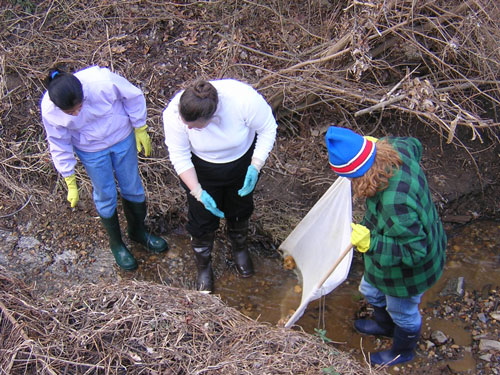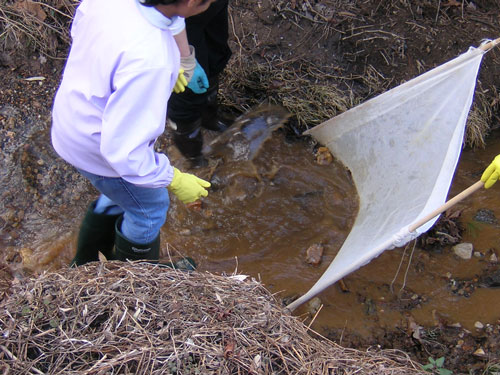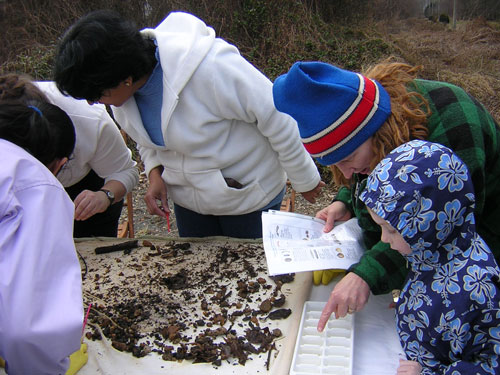
| Historic
Watershed Maps |
|
| Activities |
|
| you are here: home > activities > monitoring (1) > monitoring (2) | |
We monitor using the Fairfax County stream monitoring protocol, which is based on the Virginia Save Our Streams protocol. The basic idea is to collect a representative sampling of benthic macroinvertebrates (stream-bottom-dwelling bugs) from the stream, then identify and count them. Since some species are more tolerant of pollution and other stresses than others, their relative proportions in the sample serve as a measure of the health of the stream. We begin by collecting the sample. The first step is to select a riffle (an area where water is moving quickly over rocks, providing the oxygen that stream-dwellers need), and to position a net across the stream, weighting down the bottom with rocks:
Once the net is in place, we disturb the bottom with our feet for 90 seconds (a procedure known as "stream dancing"), dislodging the macroinvertebrates from their homes under and in between rocks, and sending them into the net:
After 90 seconds are up, we carefully pick up the net, take it back on shore, and spread it out on a white sheet on a table. We search the net itself and each piece of debris for the bugs (which can be very tiny), pick them up with forceps and paint brushes, and sort them into ice cube trays filled with water from the stream. Illustrated sheets help us identify the sample, in most cases to the Order level:
To see pictures of some of the creatures we have found in Burke's Spring Branch, and to learn more about our results, please see the next page .
|
|
| Home | Watershed Map & Areas of Interest/Concern |
Historic Watershed Maps | Activities | Contact/Join Us |
All items copyright © 2003-2005
Friends of Burke's Spring Branch unless another source is noted.
Copyright for items with identified authorship remains with the
author(s); historical and other documents reproduced here are, to
the best knowledge of the webmaster, in the public domain. Items
under Friends of Burke's Spring Branch copyright may be reproduced
for nonprofit research or educational use as long as this copyright
notice is included. Please direct comments and questions to Cathy
Saunders. |


